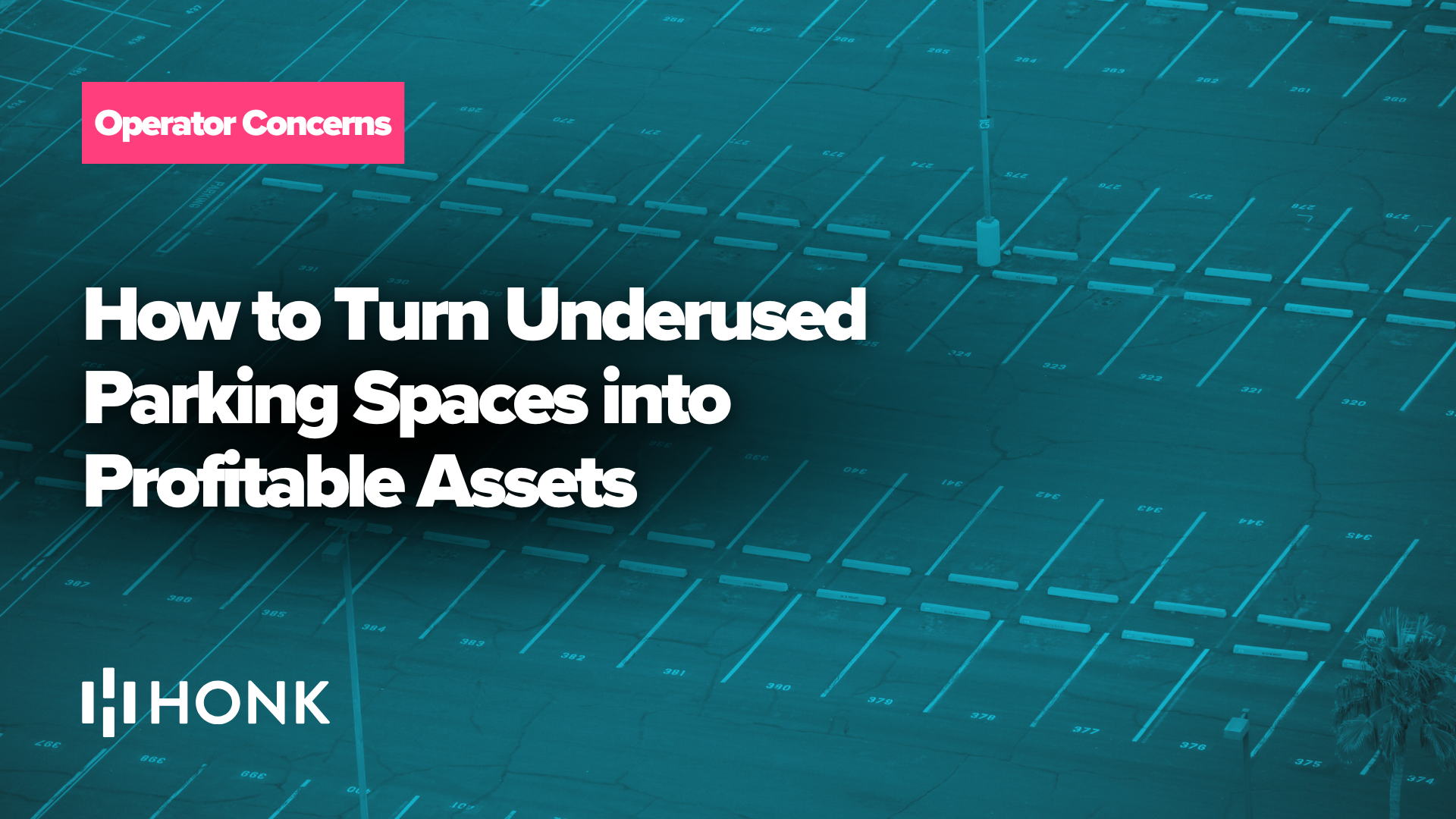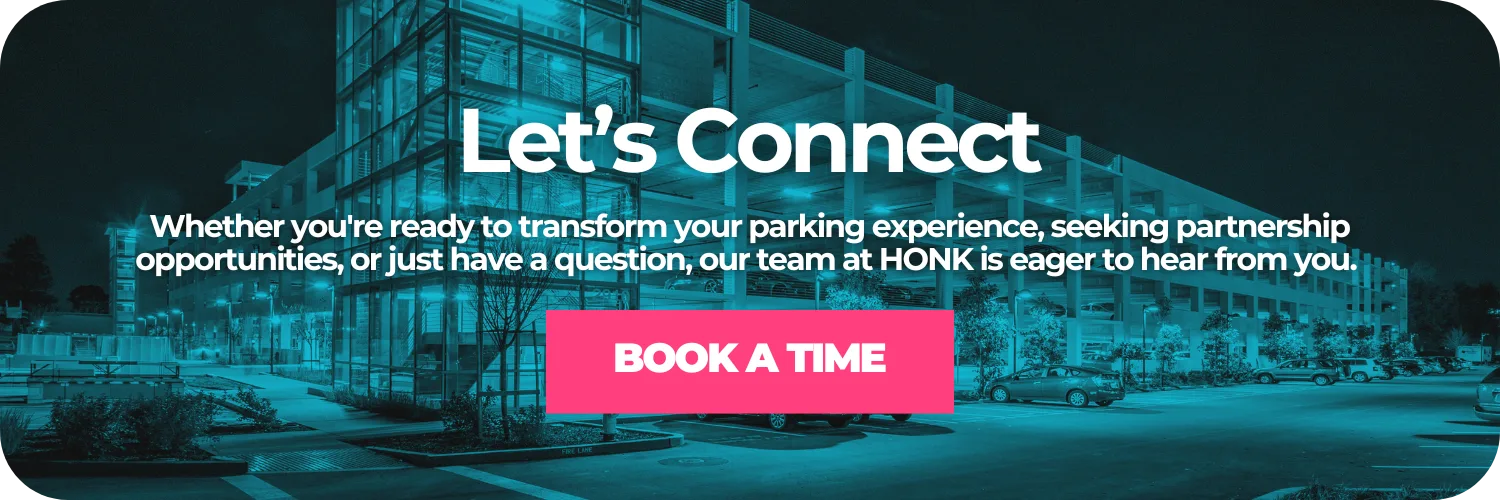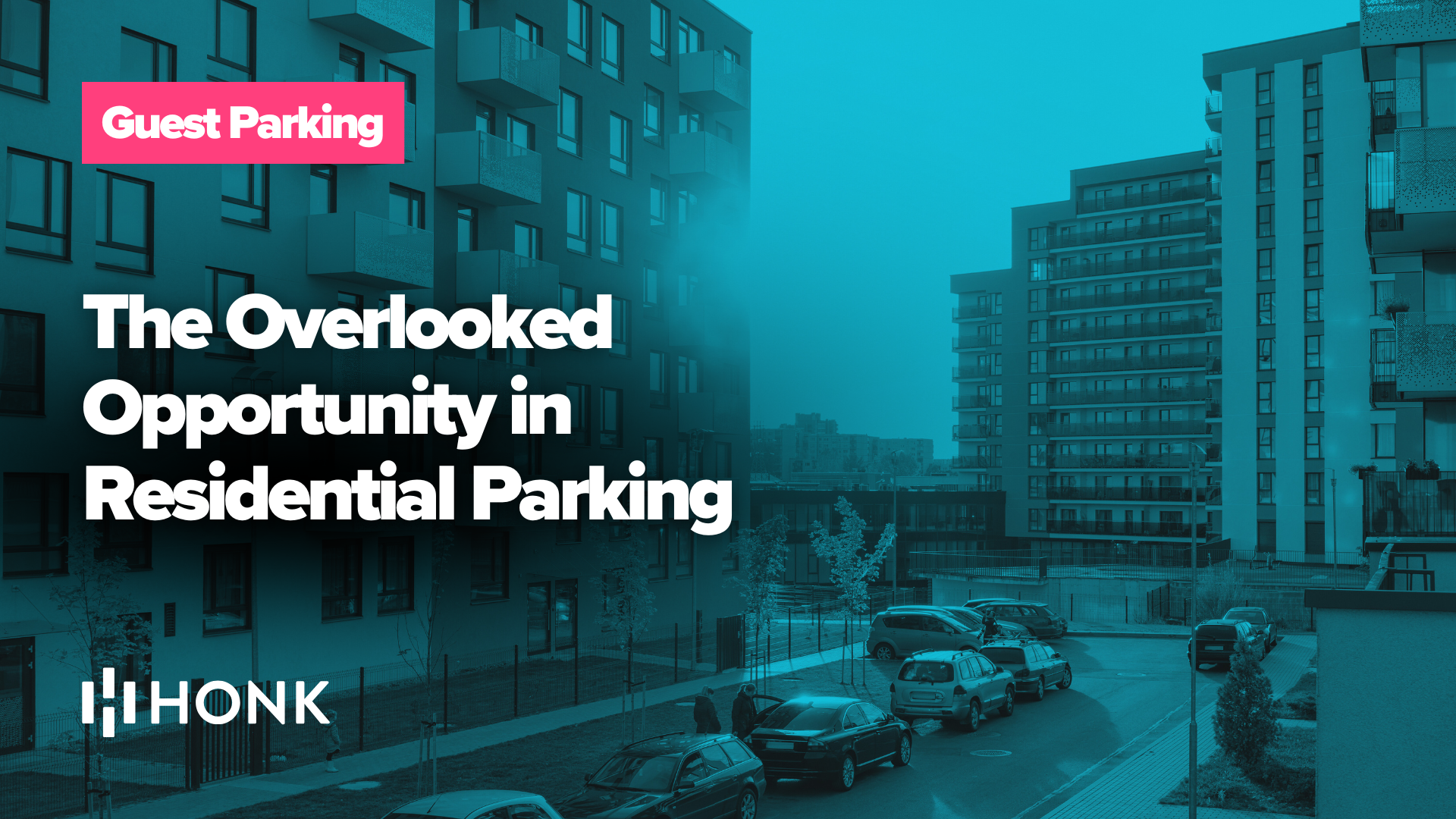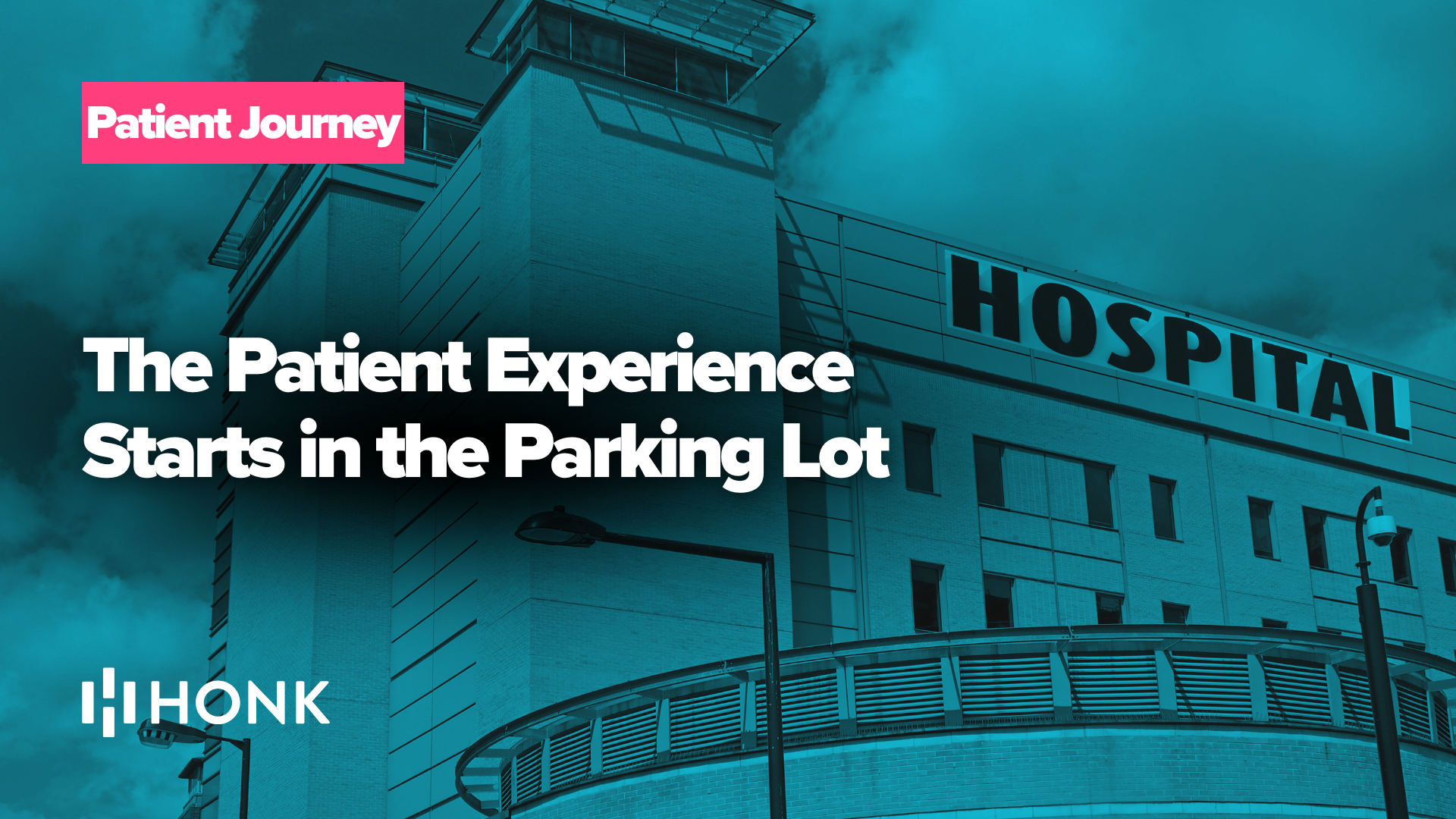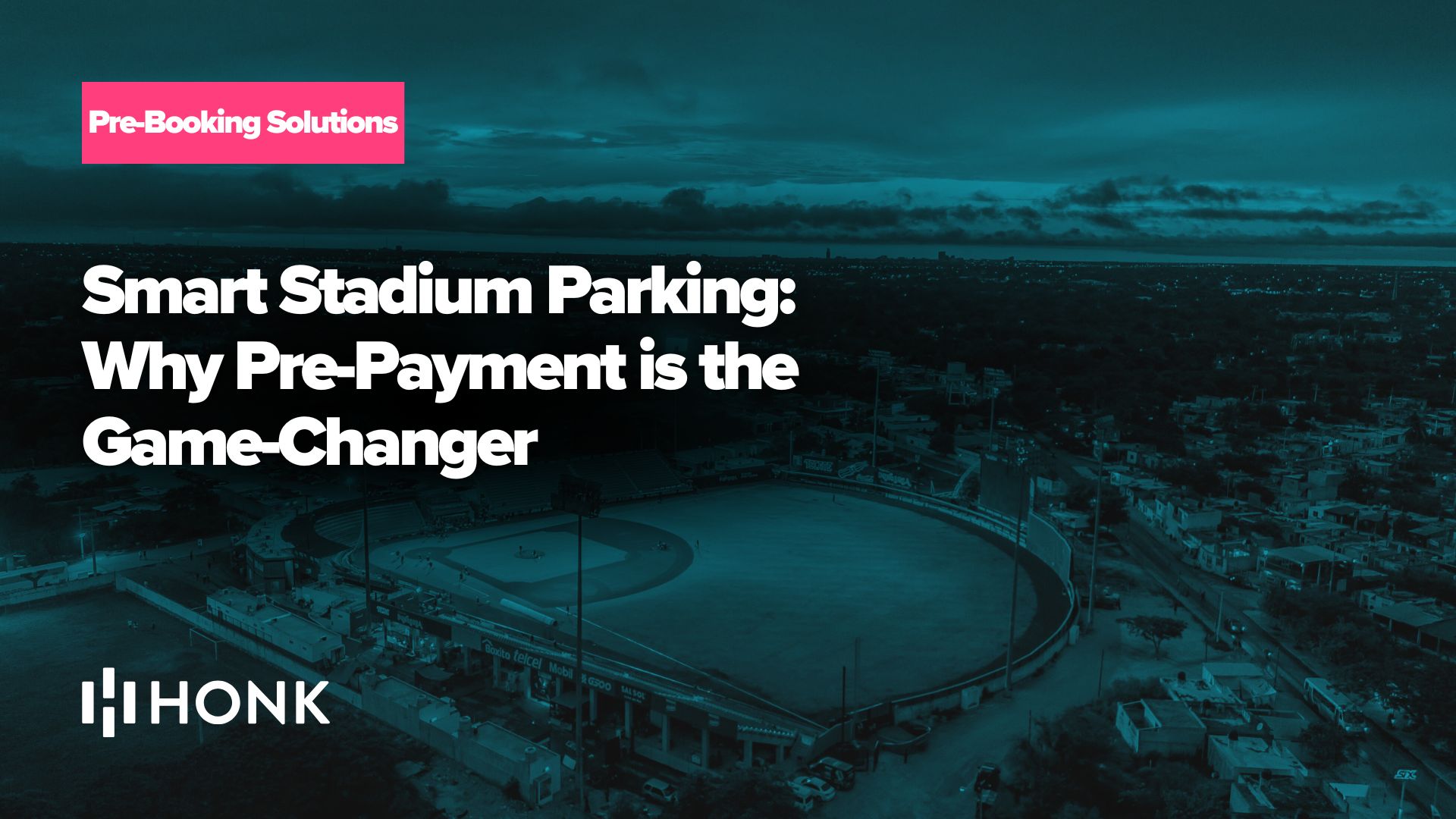If you’re managing parking operations, you’ve likely encountered the problem: a lot or garage that looks full on paper, but in reality large stretches of it sit idle for hours each day. These under-utilized spaces silently drain value. What may look like “available capacity” is in fact dormant revenue. At HONK, we believe that every parking spot can — and should — be treated as a revenue-generating asset, not just part of the cost of maintenance. By shifting your mindset and deploying smart technology, you can convert under-used inventory into a meaningful profit source.
Understanding the Under-Utilization Gap
Under-utilization shows up in many ways: spaces vacant during off-peak hours, entire levels of a garage rarely used, weekend lots sitting empty while weekdays are packed, or campus overflow lots idle outside of classes. Each unused spot represents lost opportunity — because a space costs almost as much to maintain when vacant as when full: lighting, cleaning, storm-water charges, utilities, security patrolling — all add up. The first step is recognising that an idle space is a liability. Operators who treat these areas as someone else’s problem often lose sight of the value they’re leaving on the table. With modern parking management tools, you don’t need to build new lots to increase revenue — you simply need to activate what’s already there.
Identify Under-Used Spaces with Data
To convert idle inventory into profit, you must start with insight. At HONK we provide platforms and dashboards that surface usage patterns, show occupancy by hour, day of week, precise transaction data, and reveal which locations or zones consistently under-perform. One recent operator used these analytics to find that a Sunday lot — nominally open and available — was only 18 % occupied, while a nearby weekday garage was over 90 %. Moving one month’s events into the Sunday lot alone improved utilization and added new revenue. With real-time visibility, you can answer questions like: Which zones have low average session lengths? Where do vehicles hang out beyond permitted time? Which lots show traffic during events but are idle the rest of the week? Once you establish the under‐utilised spots, you can begin to monetize them proactively.
Reprice Smartly – Dynamic Pricing Strategies
Pricing drives behavior. If you hope to use every space as a revenue source, you need flexible pricing that aligns rate with demand. Static rate boards don’t cut it. Instead consider demand-based rates: lower prices during slow periods to attract casual parkers, higher rates during events or peak hours to maximize yield, and subscription or permit bundles for frequent users. For example, a municipal operator offering weekday permit parking found that its overflow lot was rarely used on weekends. By introducing a weekend event rate that was 40 % lower than the main garage, but combined with mobile payment and remote extension capability, they increased weekend volume by 300 % and turned the lot into a profitable asset. Because the cost base was already sunk, the incremental revenue translated almost directly into margin. Using good software, you can manage rate changes remotely and instantly. At HONK, our parking software lets operators set variable rates across zones, link them to occupancy thresholds, and even schedule promotional rates without replacing signage. For more on this, read our post on How Dynamic Pricing Improves Urban Parking Efficiency.
Leverage Flexible Payment Methods
A big barrier for under-utilised lots is friction at the point of payment. Drivers arriving at a remote lot see a kiosk, queue, or must download an app — many abandon rather than proceed. Modern operators remove these barriers. With HONK’s payment solutions, you can enable mobile web payments, QR code checkout, text-to-park, or tap-to-pay signage. No app download required, no hidden fees, just pay and park. By making it easy for casual users — visitors, event attendees, ride-share drivers — you open the space to a much wider pool of users. More users paying equals more revenue. Plus, by linking payments to license plates and parking sessions, you tighten enforcement and reduce unpaid usage — thus reducing leakage in under-used zones.
Optimize Enforcement & Session Extensions
When you convert idle zones into more accessible lots, you might attract short-term parkers, event visitors, or overflow users. To protect revenue you need smart enforcement and session management. Digital platforms let you tie each session to a license plate or check-in event, and enforce properly. You also can send reminders and allow remote extensions — so a driver doesn’t leave early simply because their meter expired. Consider this: an operator introduced mobile payment in its large overflow lot, then used digital enforcement tools to monitor sessions. Because they tracked sessions in real time, they found that many overstays were happening — and nearly all paid “casual” parkers extended using their phones. The result: a 15 % increase in realized revenues in that lot in the first quarter after switching.
Repurpose Zones and Offer Value Added Services
Under-utilised parking zones can be repurposed beyond just “park and leave.” Think about offering valet, electric vehicle (EV) charging, rideshare staging, micro-fulfilment hubs, or short-term deliveries. When you digitalise payment and tie usage to your software platform, you can change the product you’re selling from “a space for a car” to “a service for a vehicle or driver.” That shift expands your addressable market. For instance, if you add EV chargers and integrate the payment with your parking platform you’ll attract an entirely new segment of usage and increase dwell time — which means higher yield per space. Or, convert under-utilized space near retail into short-duration, app-free parking that supports shoppers: quick checkout, less queueing, more turnover.
Target New Customer Segments
Traditional operations may market only to permit holders. Under-utilised spaces often lie in wait for a “unknown parker.” To activate them, think about new segments: event attendees, ride-share drivers, food-delivery drivers, short-stay shoppers, or off-peak commuters. Each offers an incremental opportunity. By deploying mobile payment signage and a digital permit issuance system, you can open up previously restricted spaces to these new audiences. A campus operator used this strategy for its peripheral lot: by offering short-stay parking at a lower rate and enabling mobile payment, they brought in ride-share drivers during off-peak hours, lifting occupancy from 22 % to 68 % and growing revenue by 35 % in six months.
Technology & Analytics: Your Foundation for Decisions
Digital payments and sensors are useful — but the real advantage comes from analytics. Platforms that show you which zones idle when, which sessions yield more revenue, and which customers extend sessions allow you to fine-tune your operation. At HONK we integrate both payments and analytics in one platform so that you can see patterns not just payers. For example, a business intelligence dashboard reveals that Lot A is 95 % used Monday–Friday but drops to 17 % Saturday–Sunday. With that insight you can craft targeted off-peak promotions, switch that lot to event pricing, or repurpose that lot as a rideshare staging area on weekends. These decisions drive higher utilization and stronger revenue – all without building a new garage.
Overcoming Operator Concerns
Some operators hesitate to activate idle zones because of objections: “Will it cannibalize permit revenue?” “What if we get enforcement problems?” “What if this adds complexity?” The good news: modern digital platforms address these concerns. By using mobile payments you can avoid cannibalisation by differentiating product (short-stay vs permit). Smart enforcement keeps control in place. And modern platforms are designed for simplicity, with minimal hardware and cloud deployment, making onboarding straightforward. Many operations realise gains quickly and scale up confidently.
Building a Roadmap for Activation
If you’re ready to turn unused parking spaces into profit centres, here’s a roadmap you can adopt:
- Audit usage – pull occupancy and transaction data across each zone.
- Identify under-utilised zones – mark lots or levels with < 50 % peak occupancy or frequent idle hours.
- Define product & rate – decide whether to open the zone to casual parkers, events, rideshare staging or EV charging.
- Deploy payment signage – place QR or tap-to-pay signs, enable mobile checkout, avoid hardware delays.
- Monitor results – use analytics dashboards to track changes in occupancy, revenue and session length.
- Adjust and scale – refine rate, apply dynamic pricing, expand to other idle zones.
Why This Matters for Operators
In a world where real estate is expensive and growth often means building new capacity, the smarter move is to optimise what you already have. By leveraging digital payment platforms, flexible pricing, and data analytics you can start generating more revenue now — without expanding your footprint. When you treat every space as an asset, you shift the narrative: from “we have empty lots” to “we have untapped revenue.” That shift is powerful.
The Final HONK
Unused parking spaces don’t have to be a drag on your financials. With the right technology, pricing strategy and mindset, those same spots can become reliable income streams. At HONK we’re committed to helping operators unlock the full potential of their parking inventory. Whether you manage city garages, campus lots, retail garages or private parking assets, start now. Audit your inventory, deploy smart payments, enable analytics, and treat every parking space like the asset it truly is. The future of parking is not just about finding a spot — it’s about making that spot work for you.

